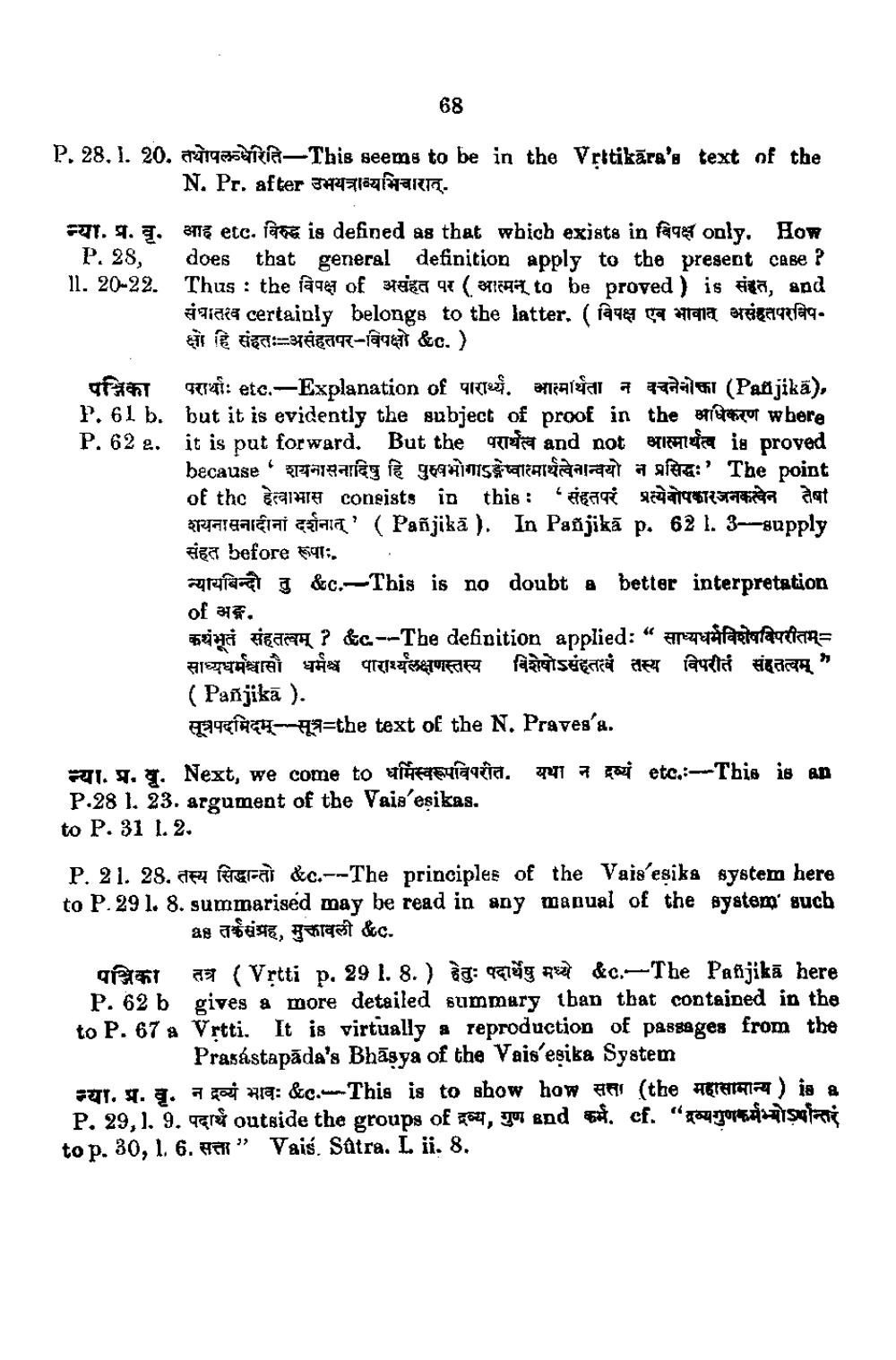________________
68
P.28. 1. 20. तथोपलव्धेरिति-This seems to be in the Vettikara's text of the
N. Pr. after उभयत्राव्यभिचारात्. न्या. प्र. वृ. आह etc. विरुद्ध is defined as that which exists in विपक्ष only. How
P. 28, does that general definition apply to the present case ? 1. 20-22. Thus : the विपक्ष of असंहत पर (आत्मन् to be proved ) is संहत, and
संघातरव certainly belongs to the latter. (विपक्ष एव भावात असंहतपरविप.
क्षो हि संहतः असंहतपर-विपक्षो &c.) पत्रिका परार्थाः etc.-Explanation of पारायं. आत्मार्थता न पचनेनोका (Panjika), P. 61 b. but it is evidently the subject of proof in the opisecur where P. 62 2. it is put forward. But the परार्थत्व and not भास्मार्थत्व is proved
because ' शयनासनादिषु हि पुरुषभोगाइनेष्वात्मार्थत्वेनान्वयो न प्रसिद्धः' The point of the हेत्वाभास consists in this: ‘संहतपरं प्रत्येवोपकारजनकत्वेन तेषा शयनासनादीनां दर्शनात् ' ( Paijika). In Panjika p. 62 1. 3-supply संहत before रूपाः । न्यायबिन्दी तु &c. This is no doubt a better interpretation of अङ्ग. कथंभूतं संहतत्वम् ? &c.---The definition applied: “ साध्यधर्मविशेषविपरीतम्= साध्यधर्मश्चासौ धर्मश्च पाराश्यलक्षणस्तस्य विशेषोऽसंहतत्वं तस्य विपरीतं संहतत्वम् " ( Panjika).
सूत्रपदमिदम्--सूत्र=the text of the N. Pravesa. न्या. प्र. वृ. Next, we come to धर्मिस्वरूपविपरीत. यथा न द्रव्यं etc.:---This is an P.28 I. 23. argument of the Vais'esikas. to P.31 1.2.
P. 21. 28. तस्य सिद्धान्तो &c.--The principles of the Vaisesika system here to P.29 1. 8. summarised may be read in any manual of the system' such
_as तर्कसंग्रह, मुक्तावली &c. पनिका तत्र ( Vrtti p. 29 1. 8.) हेतुः पदार्थेषु मध्ये &c.-The Patijika here P. 62 b gives a more detailed summury than that contained in the to P. 67 a Vrtti. It is virtually a reproduction of passages from the
Prasastapāda's Bhāsya of the Vais'esika System न्या. प्र. ७. न द्रव्यं भावः &c.---This is to show how सत्ता (the महासामान्य) is a P. 29,1. 9. पदार्थ outside the groups of द्रव्य, गुण and कर्म. cf. "द्रव्यगुणकर्मभ्योऽपान्तरं top. 30, 1. 6. सत्ता" Vais. Sutra. Lii.8.




